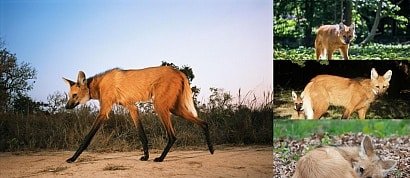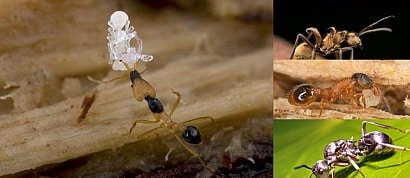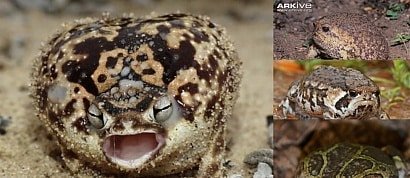A list of my favorite images of Gila monsters.
en.wikipedia.org/wiki/Gila_monster
The Gila monster (Heloderma suspectum) is a species of venomous lizard native to the southwestern United States and northwestern Mexican state of Sonora.
A heavy, typically slow-moving lizard, up to 60 cm (2.0 ft) long, the Gila monster is the only venomous lizard native to the United States and one of only two known species of venomous lizards in North America, the other being its close relative, the Mexican beaded lizard (H. horridum).
Though the Gila monster is venomous, its sluggish nature means it represents little threat to humans. However, it has earned a fearsome reputation and is sometimes killed despite being protected by state law in Arizona.
The name "Gila" refers to the Gila River Basin in the U.S. states of New Mexico and Arizona, where the Gila monster was once plentiful.
Heloderma means "studded skin", from the Ancient Greek words helos (the head of a nail or stud) and derma (skin).
Suspectum comes from the describer, paleontologist Edward Drinker Cope, who suspected the lizard might be venomous due to the grooves in the teeth.
Gila monsters spend 90% of their time underground in burrows or rocky shelters. They are active in the morning during the dry season (spring and early summer); later in the summer, they may be active on warm nights or after a thunderstorm.
They maintain a surface body temperature of about 30 °C (86 °F).
Gila monsters are slow in sprinting ability but they have relatively high endurance and maximal aerobic capacity (VO2 max) for a lizard.
They are preyed upon by coyotes and raptors. The Gila monster may live up to 20 years in the wild, or 30 in captivity.
The Gila monster eats small birds, mammals, frogs, lizards, insects and carrion. The Gila monster feeds primarily on bird and reptile eggs and eats infrequently (only five to ten times a year in the wild) but, when it does feed, it may eat up to one-third of its body mass.
It uses its extremely acute sense of smell to locate prey, especially eggs. Its sense of smell is so keen, it can locate and dig up chicken eggs buried 15 cm (6 in) deep and accurately follow a trail made by rolling an egg.
Prey may be crushed to death if large or eaten alive if small, swallowed head-first, and helped down by muscular contractions and neck flexing. Unusually, after food has been swallowed, the Gila monster immediately resumes tongue flicking and search behavior, probably as a result of a history of finding clumped prey such as eggs and young in nests.
Gila monsters are able to climb trees and cacti in search of eggs.
Their venom is a neurotoxin as toxic as that of a coral snake (H. suspectum) but it produces only small amounts.
The Gila monster's bite is not fatal to healthy adult humans. No reports of fatalities have been confirmed after 1939 and those recorded prior to that year are possibly iatrogenic or resulting from attempts to treat the bite itself.
The Gila monster can bite quickly (especially by swinging its head sideways) and hold on tenaciously and painfully. If bitten, the victim may need to fully submerge the attacking lizard in water to break free from its bite.
Symptoms of the bite include excruciating pain, edema and weakness associated with a rapid drop in blood pressure.
Urban sprawl and habitat destruction have adversely affected Gila monster numbers. In 1952, they became the first venomous animal to be given legal protection.
Gila monsters are listed as Near Threatened by the IUCN. In 1963, the San Diego Zoo became the first zoo to successfully breed Gila monsters in captivity.
Added to
People who voted for this also voted for
Piano Scenes III - Movies
Luna Lazar ~ Danish Model
Film Diary of 2023
not diamonds, dogs are the best friends
Most Watched T.V. Series Of All Time Year By Year
closed eyes (1)
im Bett
Lying in Snow - Movies
Actors of Interest
Memorable Film Scores
Schirmherrin
Under The Radar Films
Chauffeur - Movies
... und deine blauen Augen ...
DC|Marvel Comics Animated Movies I like
More lists from kathy
Favorite Images of Maned Wolves
Animals - B
Favorite Images of Secretary Birds
Favorite Feelgood Tracks #2
Favorite Postage Stamp Designs - Disney
Favorite Images of Ants #2
Favorite Images of Rain Frogs
 Login
Login
































































